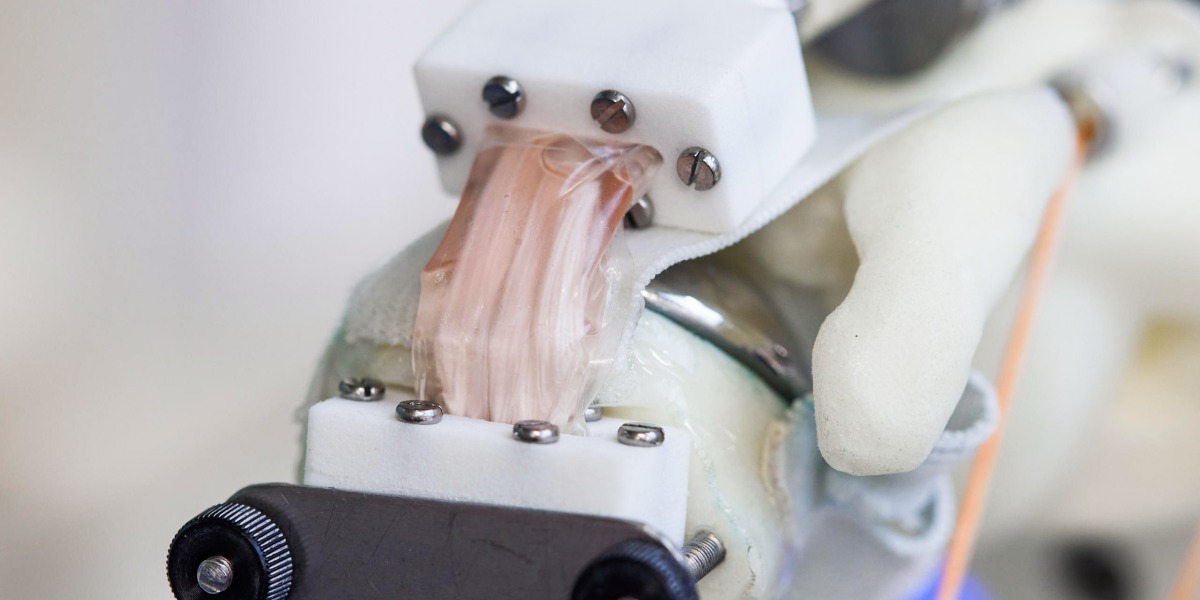
“Using robots for tissue engineering creates much more realistic biomechanical stimulations, which I see as a breakthrough,” says Dana Damian, a lecturer at the University of Sheffield, who was not involved in the study. “The next step is to establish that robot involvement shows a clear improvement over using conventional bioreactors.”
The technology could be used to produce tissue to repair tears in the rotator cuff tendons, a very common shoulder issue that can arise from a sports injury or a disease such as tendinitis, which is the most common cause of shoulder pain in adults. Typically, surgeons use sutures to reattach broken tendons to the bone, a repair that fails in around 40% of cases because of poor tissue healing. Tissue grafts grown using stimulation from humanoid robots might heal more successfully.
The technique is still some way from producing a fully functional tendon tissue graft, but the researchers say a similar approach could have other applications as well–creating better muscles or ligaments in bioreactors, for example. And the robots could be made to match the patient’s own physiology, personalizing the tissue they produce, the team suggests.
Correction: The name of the journal has been amended.
